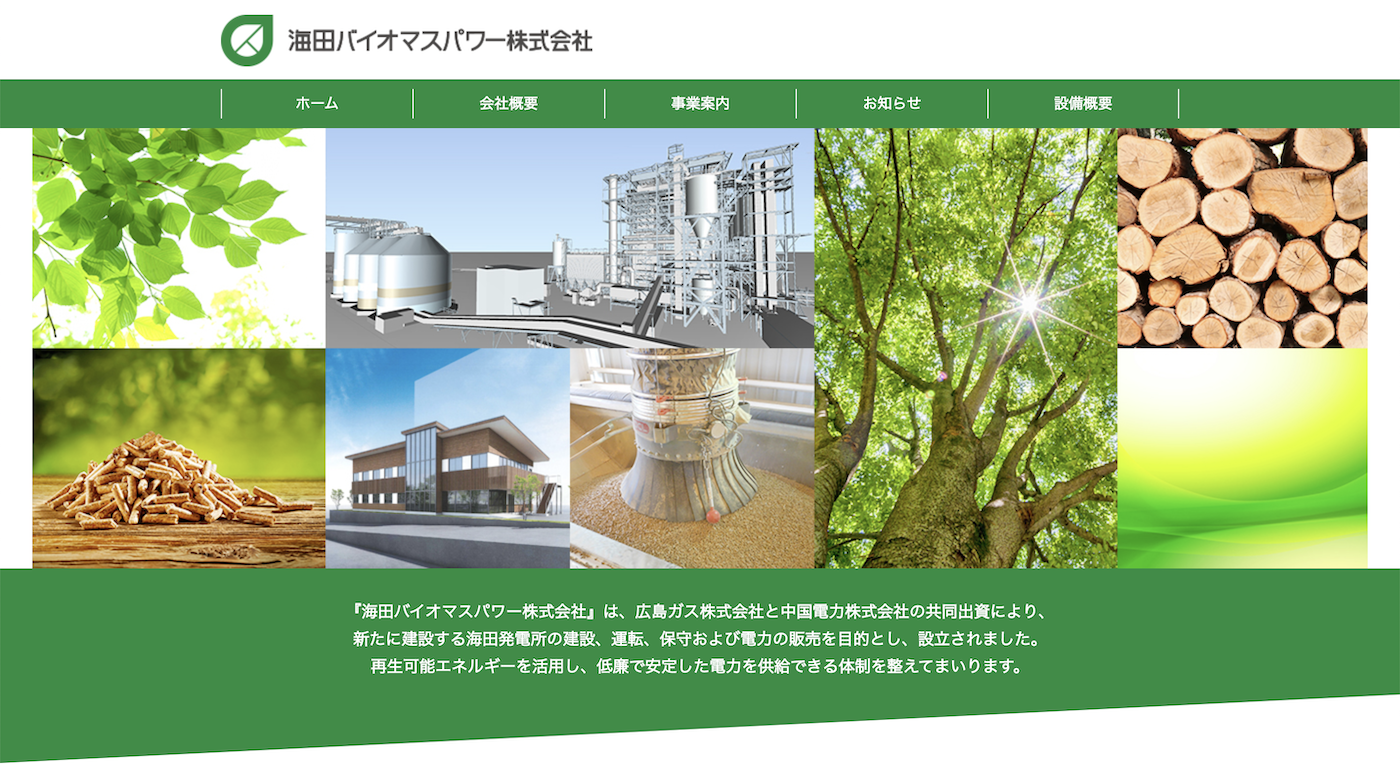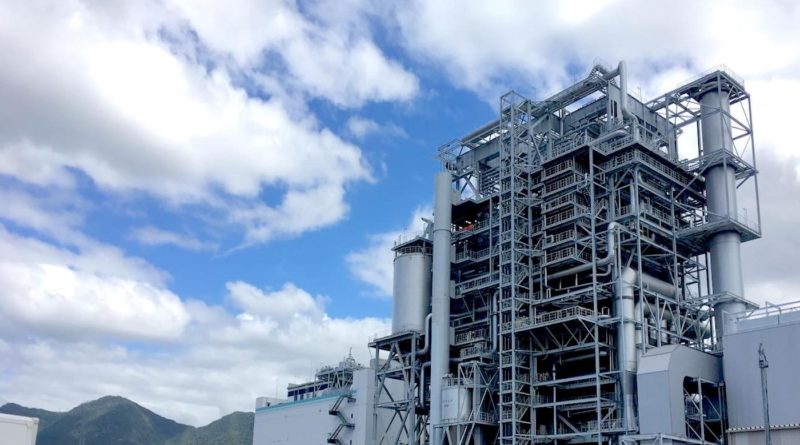Hiroshima’s new power plant that nobody’s heard of
A microcosm of Japan’s controversial energy policies is playing out in our backyard.
Japan has increasingly come under fire for its attachment to coal, often called the dirtiest fossil fuel. Despite steps in the right direction — such as a July 2020 announcement about mothballing older, “less efficient” coal-fired power plants, and the Suga administration’s more ambitious climate goals — Japan is still far from going coal-free. In fact, over a dozen “high-efficiency, next generation” plants are currently planned or already under construction across the country.
Including one in Kaita, just east of Hiroshima City.
Scheduled to begin operations in March 2021, the new plant is operated by Kaita Biomass Power, a company jointly established by Hiroshima Gas and Chugoku Electric Power. As the name suggests, Kaita Biomass is doing its part to implement another government energy initiative: cofiring coal with woody biomass.
There are various kinds of biomass fuels, such as energy crops, manure, and wood. Although burning biomass releases CO2, its plant-derived forms are classified as carbon neutral because plants absorb and sequester CO2 throughout their lives.
As such, Kaita Biomass is expected to “contribute to a low-carbon society,” a wish expressed by president Takeshi Tanimura during a ceremony held on Dec. 10, 2018, the day before construction began.
What’s in a name?
Kaita Biomass Power’s website lists three kinds of biomass fuels that the plant will burn: wood chips, white pellets, and palm kernel shells. According to its listing on Hiroshima Prefecture’s website, biomass will account for roughly 43% of the plant’s fuel, with the remainder consisting of 53% coal and 3% natural gas.
Would it be possible to increase the ratio of biomass fuel to make the plant more environmentally friendly?
Not by a significant amount, according to an environmental impact assessment committee hearing held by Hiroshima City on July 26, 2016. When a committee member asked whether that ratio of biomass fuel had been determined as optimal for minimizing CO2 emissions, a representative from Hiroshima Gas answered as follows.
“Incorporating more biomass leads to a reduction in CO2 emissions, so from that perspective we hope to use as much biomass mixed fuel as possible. However, there are difficulties procuring biomass. Additionally … although we plan to use as high a ratio of biomass mixed fuel as possible, inspection results of the boiler equipment show that it is currently not possible to incorporate more than about 50% biomass.” (All translations my own.)
So even if procuring biomass goes as smoothly as possible, the 112 megawatt mixed fuel plant will, in a sense, always be at least a 56 MW coal-fired power plant.
For reference, that’s on the small side: A number of coal-fired power plants in Japan, including some currently planned or under construction, have a capacity of 1,000 MW. Conversely, the new Kaita plant seems of a typical size among Japan’s biomass-burning fleet.

Epitomized by its leaf-shaped logo, Kaita Biomass Power sells itself as eco-friendly and consistently downplays its use of coal. The Company Profile page of its still sparsely populated website notes that the plant will “use renewable energy and provide cheap, stable electricity,” while construction updates use wording such as “biomass fuel, etc.” to describe what the plant will be burning.
Local media, on the rare instances they cover Kaita Biomass, similarly highlight the new plant’s green qualities. In December 2019, the Chugoku Shimbun wrote that the plant would “mainly use woody biomass and some coal.”
Greenwash
But not everyone is on board with using biomass as a quick fix to replace fossil fuels.
An August 2020 article by Mongabay, bluntly headlined “Are forests the new coal?,” quoted Science Advisory Council of the European Academies Environmental Director Michael Norton: “When the forest is harvested and used for bioenergy, all the carbon in the biomass enters the atmosphere very quickly, but it will not be reabsorbed by new trees for decades. This is not compatible with the need to tackle the climate crisis urgently.”
Experts say we have just a decade to drastically cut emissions in order to curb the effects of climate change. Biomass’ designation as carbon-neutral is based on a much more forgiving timeline.
And although some wood pellets come from forest thinning, which is healthy for the ecosystem, they are also produced through clear cutting — a trend likely to increase as demand grows. Even if the forests are replanted, they will have lost their former biodiversity.
Woody biomass is actually a less efficient energy source than coal, meaning it releases more CO2 per unit of electricity generated. So when Kaita Biomass Power or the city’s environmental impact committee discusses “reductions in CO2 emissions,” their calculations appear to be based on biomass’ designation as carbon-neutral, rather than the actual amount of CO2 that will be emitted by the plant.
Take, for example, an August 2015 Q&A, where a committee member asked to what extent biomass would reduce the plant’s greenhouse gas emissions. The project representative replied: “The 11.2MW plant would produce about 600,000 tons of CO2 per year burning only coal; swapping in 25% biomass by calorie [energy yield] cuts CO2 by about 150,000 tons.”
Whose trees will fuel Hiroshima’s plant?
Up to now, Japan’s Ministry of Economy, Trade and Industry (METI) has held the most sway over the country’s energy policies. METI’s current strategic energy plan describes woody biomass as “a stable power source which may also contribute to local revitalization.” According to the plan, biomass can be suited to local energy production and consumption, “as well as keeping up Japan’s precious forest and revitalizing the forestry industry.”
Is the new Kaita plant up to the task? During the planning stages, the answer seemed dubious.
At the July 2016 Hiroshima City environmental impact hearing, the Hiroshima Gas representative answering committee members’ questions admitted: “Although it is our basic policy to use as much brushwood etc. [from within the prefecture] as possible, almost all of it is currently spoken for by other businesses.”
Committee members were also concerned that a domestic fleet of fuel-inefficient trucks or sourcing from overseas would negate any supposed environmental friendliness done by using biomass in the first place. But their request for detailed data didn’t get far. One member noted that they had “received the non-answer that reductions in CO2 emissions can’t be calculated because biomass sources and waste disposal sites have not been identified.”
Now, less than six months before the start of operations, the majority of biomass suppliers have been identified, according to a Kaita Biomass Power employee I spoke with over the phone. Although they weren’t at liberty to give me the ratio of the company’s domestic to overseas suppliers, they did confirm that biomass fuel would be sourced both domestically (wood chips, presumably from forest thinning) and from overseas (including palm kernel shells from Southeast Asia).
According to the city’s environmental impact committee, Kaita Biomass Power will have a duty to report its fuel sources once operations begin. (The employees I spoke with said the company was still considering the extent of its disclosure.)
Although I couldn’t get specifics from Kaita Biomass, data compiled by Friends of the Earth Japan named Canada and, increasingly, Vietnam as the main producers of Japan’s wood pellets. The majority of palm kernel shells are imported from Indonesia and Malaysia.
Domestic biomass production faces difficulties beyond Hiroshima Prefecture. A 2018 Nikkei article reported that labor shortages prevent domestic forests from being fully utilized. With imported wood pellets two to three times cheaper than those produced domestically, Japan’s imports had increased sixfold in the preceding five years.
According to the Environmental Paper Network, Japan will be the world’s second largest consumer of biomass by 2027. But with imports coming from North America and Southeast Asia, biomass seems far from the self-sufficient, revitalizing energy source the government hopes it will be.
“Clean” and “carbon-neutral”
On Oct. 26, Prime Minister Yoshihide Suga declared that Japan would become carbon neutral by 2050, a major change from the previous target of an 80% reduction in emissions. The country’s coal policy, too, will undergo a “fundamental shift,” though specifics are yet to be announced.
In its current plan, Japan expects “clean” coal to still provide 26% of its power by 2030. With energy mix targets set to be reviewed in the coming months, it remains to be seen how Suga’s “shift” will impact the operations of coal-fired power plants across the country.
Under the guise of a carbon-neutral fuel, biomass usage is expected to increase, at the expense of carbon-sequestering forests and their biodiversity. Without awareness of its inherent contradictions, more ambitious emission targets may push Japan’s power generation toward biomass, rather than away from it.
These trends are playing out, largely unnoticed, in Hiroshima.
I went to check out Kaita Biomass Power on a lazy Sunday. Even without a smartphone, it wouldn’t be hard to find: Just head from JR Kaita-ichi Station toward the shiny, new, 60-meter-high boiler structure peering over apartments and office buildings. I asked the guard on duty at the grounds entrance if I could get closer to take a photo of the company logo — proudly affixed, in all its green glory, to the north side of the turbine building — but walk-ins weren’t allowed.
The guard speculated that tours might be available once operations start. Anyone interested?


